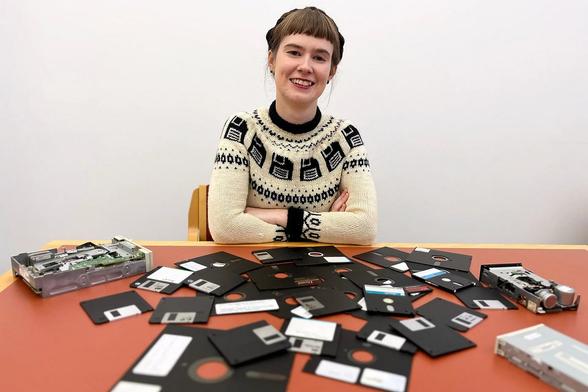2025-10-17 06:56:11
Library is Rescuing Historical Treasures Trapped on Old Floppy Disks from the ‘Digital Dark Ages’ https://www.goodnewsnetwork.org/library-is-rescuing-historical-treasures-trapped-on-old-floppy-disks-from-the-digital-d…
2025-11-17 10:44:59
Kennt ihr eigentlich den Pocast des Archivradios? Das sind originale Tondokumente aus unterschiedlichen Epochen der deutschen Geschichte. Die letzten paar veröffentlichten Episoden ist Material aus den Nürnberger Prozessen. Ihr wisst schon: Weltkrieg, Nazis, Kriegsverbrechen. Unbedingte Subscribe- und Hörempfehlung! Rundfunkbeitrag bei der Arbeit. #podcast
2025-10-14 03:23:05
OpenTRV Archive Material and Sources - Archival collection of OpenTRV history, events, links, discussion, and related material. #OpenTRV #heating #cutCarbon -
2025-09-16 09:14:36
Spontaneous Twirls and Structural Frustration in Moir\'e Materials
Jingtian Shi, Gaurav Chaudhary, Allan H. MacDonald, Ivar Martin
https://arxiv.org/abs/2509.10907 https://
2025-09-17 03:07:14
#Censorship of national park.service information is starting to kick in. See https://www.nytimes.com/2025/09/16/climate/trump-park-service-slavery…
2025-09-17 10:50:40
ICDAR 2025 Competition on FEw-Shot Text line segmentation of ancient handwritten documents (FEST)
Silvia Zottin, Axel De Nardin, Giuseppe Branca, Claudio Piciarelli, Gian Luca Foresti
https://arxiv.org/abs/2509.12965
2025-09-16 09:58:47
SDSS-V Local Volume Mapper (LVM): Revealing the Structure of the Rosette Nebula
M\'onica A. Villa-Durango, Jorge Barrera-Ballesteros, Carlos G. Rom\'an-Z\'u\~niga, Emma R. Moran, Jason E. Ybarra, J. Eduardo M\'endez-Delgado, Niv Drory, Kathryn Kreckel, Hector Ibarra-Medel, S. F. S\'anchez, Evelyn J. Johnston, A. Roman-Lopes, Jes\'us Hernandez, Jos\'e G. Fern\'andez-Trincado, Amelia M. Stutz, William J. Henney, A. Ghosh, Sumit K. Sarbadhicary, A. Z. Lugo-…
2025-11-13 04:12:01
I’ve seen posts about how Democratic politicians have to be “punished” and then they’ll shape up — even one horrifying post basically arguing that we need a couple more years for fascism to fully materialize in order to reform our political system.
My dude…this “people will wake up when it’s bad enough” trope doesn’t work. It’s never worked. It’s been failing spectacularly my whole life — and if one Trump term didn’t do it…what will? And how many people’s lives will be destroyed along the way?
That thinking will kill us all.
4/
2025-09-16 08:31:16
The Rapid Arrival of Josiah Willard Gibbs's Elementary Principles in Statistical Mechanics in European University Libraries
Hector Giacomini
https://arxiv.org/abs/2509.10732
2025-10-13 09:40:30
Robust reset control design for piezo-actuated nano-positioner in presence of hysteresis nonlinearity
Ashkan Sebghati, S. Hassan HosseinNia
https://arxiv.org/abs/2510.09445 http…







